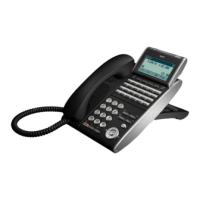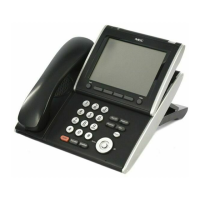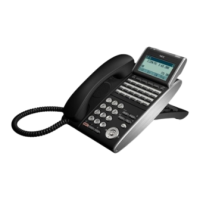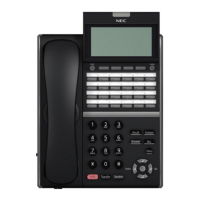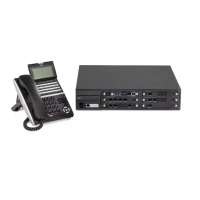General Information
SECTION 1 VOICE OVER IP
Voice over IP (VoIP) is a technology that converts speech into data packets and transmits these
packets over TCP/IP networks. The technology also facilitates compression and silence suppression
to reduce network bandwidth demands.
As most organizations already have existing data networks in place, considerable cost savings can be
achieved by utilizing spare bandwidth on these networks for voice traffic.
NEC SL2100 supports the use of IP Phones. These telephones provide the same functionality as a
multiline telephone but use the data network rather then the traditional telecoms infrastructure. This
can reduce costs and allow the use of NEC SL2100 telephones in locations that would not normally be
supported by multiline telephones.
Table 2-1 Table 2-1 VoIP Specifications on page 2-1 lists the specifications for various aspects of
NEC SL2100 VoIP system.
Table 2-1 VoIP Specifications
Category Feature Notes
IP Address DHCP Server
*1
CPU-C1/VoIPDB
DHCP Client
*1
VoIPDB/IP Phone
QoS 802.1p/1q CPU-C1
L3 QoS (ToS) Diffserv/IP Precedence
Maintenance HTTP Server CPU-C1/VoIPDB
VLAN Tag and port-based VLAN
VoCoder G.711 µ-law/A-law
G.729a
G.722
G.726
Jitter Buffer Size Set by system programming
RTP Length Set by system programming
Echo Canceller Tail Size Set by system programming
Level Adjustment Set by system programming
IP Phone SIP Phone SIP Phone
SIP Trunk SIP Trunk Maximum 128 Trunks
*1. DHCP Server and DHCP Client cannot be used at the same time. When the DHCP Server is enabled the
DHCP Client function cannot be activated.
When the VoIPDB is installed, the CPU-C1 is no longer active, all IP connections go through the VoIPDB.
Networking Manual 2-1
General Information
2

